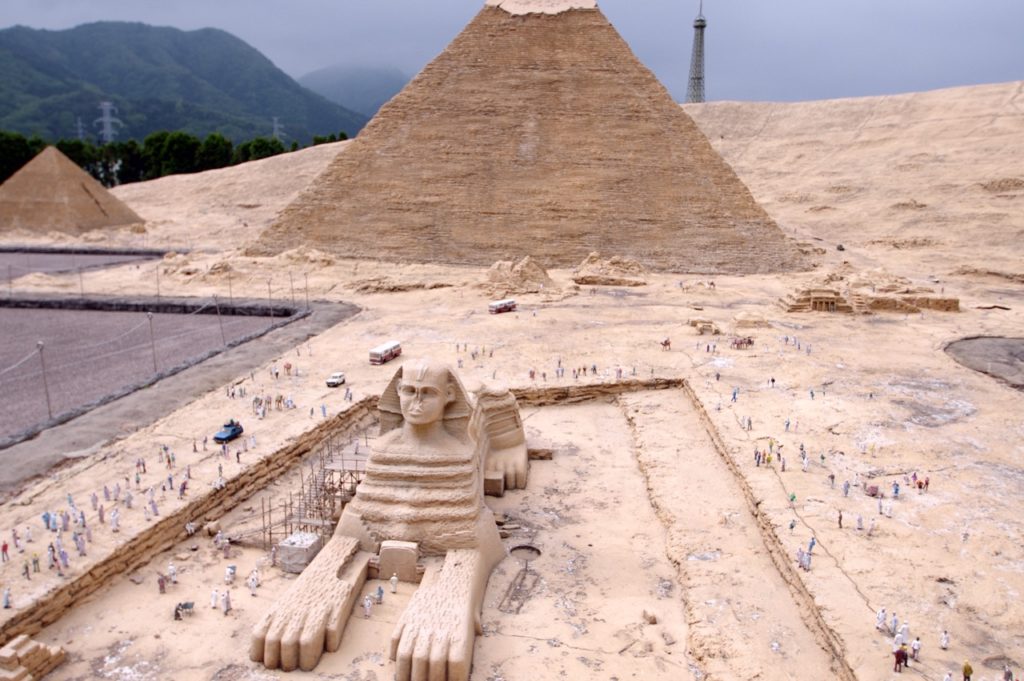
Tochigi Prefecture, situated northeast of Tokyo, hosts year-round leisure attractions that include Lake Chuzenji, the Kegon waterfall, Okunikko National Park, the Kinugawa mineral spa and Shrines and Temples of Nikko, a UNESCO World Heritage Site. It also boasts several theme parks, including Tobu World Square, which opened in April 1993 after five years of construction.
Tobu World Square covers a fairly compact area, in which 102 modern and historic relics from 21 countries are on display. Nearly half of the 1/25th scale-model replicas have been designated World Cultural or Heritage sites by UNESCO. The park’s operator does not exaggerate when it boasts, “It will make you feel like a 25 times taller colossal kid, touring around the world!”
The fastest and easiest way to get there is via the Tobu railway line, which operates frequently departing limited express trains, with reserved seats that running from Tobu Asakusa station in downtown Tokyo to Kinugawa Onsen. From there a taxi or shuttle bus can be taken to the park.
Once inside the main entrance gate a right turn takes you to the Modern Japan Zone, which features a model of the 634-meter high Tokyo Sky Tree — its newest attraction — along with familiar buildings still in use such as Tokyo Central Station, the National Diet building, the Tokyo Dome, Yoyogi National Stadium and Narita International Airport. There’s also a model of the Imperial Hotel, designed by American architect Frank Lloyd Wright, which was in use from 1923 to 1967.

A Shinkansen (bullet train) and commuter train depart Tokyo Central Station.
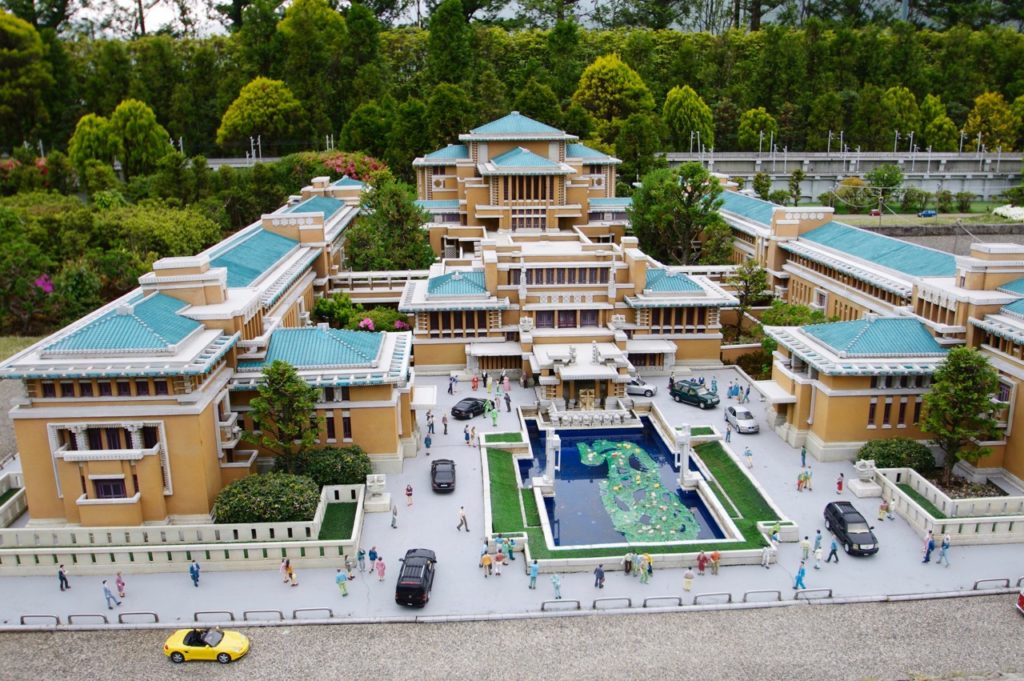
Imperial Hotel
Next comes the America Zone, with the Statue of Liberty, Empire State Building, Chrysler Building, Flatiron Building and the White House. Prominent among them are the twin towers of the former World Trade Center.
After the terrorist attacks of September 11, 2001, a few people were quick to jump on the park’s operators, accusing them of “exploiting” the tragedy — entirely untrue, of course, since the models had been standing there from years beforehand. And I fully applaud the park’s decision to leave them standing as a memorial to the victims and reminder of a famous historical event.
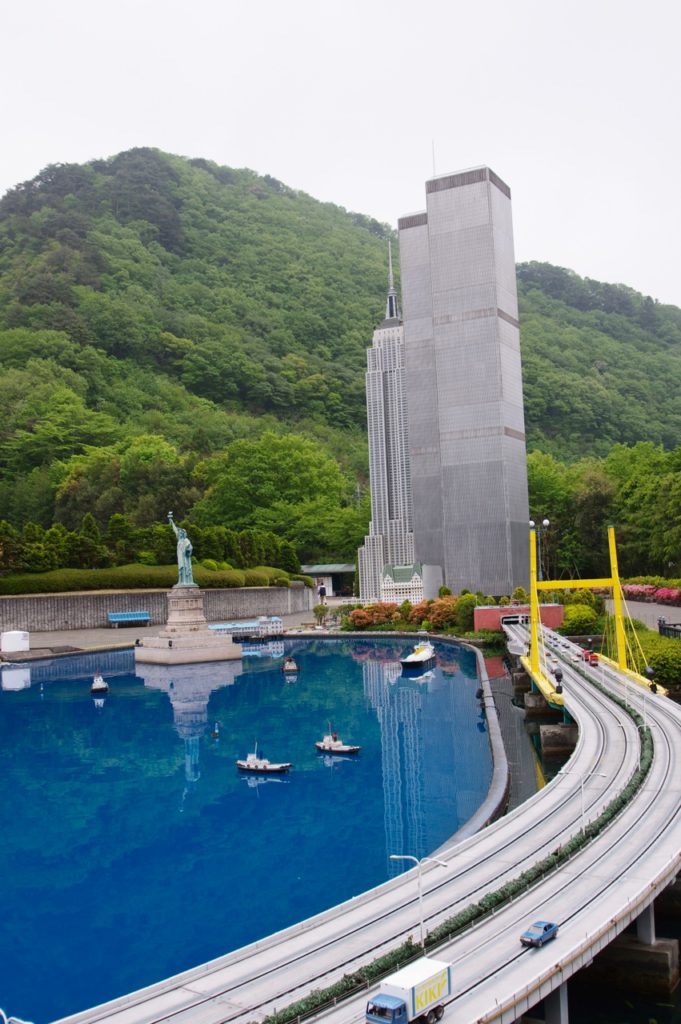
This scene of lower Manhattan shows the Statue of Liberty and twin towers of the World Trade Center, which collapsed after a terrorist attack on Sept. 11, 2001.
On the street outside New York’s 22-story Flatiron Building — built in 1902 as the world’s first skyscraper — is a traffic accident, with several patrol cars on the scene.
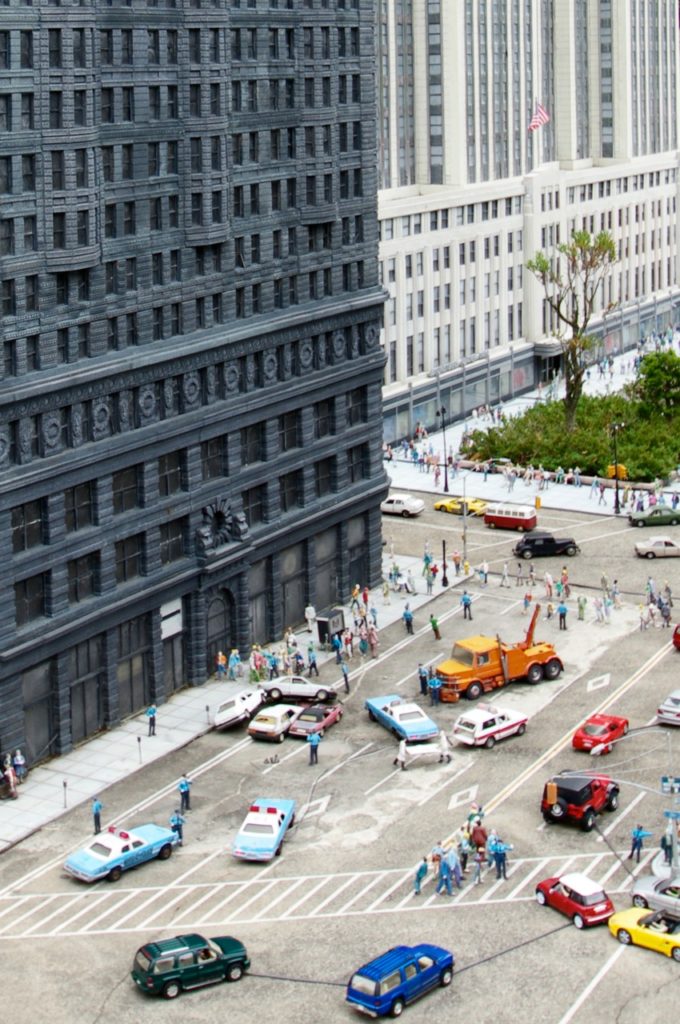
New York cops converge on a traffic accident in central Manhattan.
Next, in the Egypt zone are three Pyramids, including the Great Pyramid of Cheops, the Great Sphinx and the four statues at the temple of Abu Simbel.
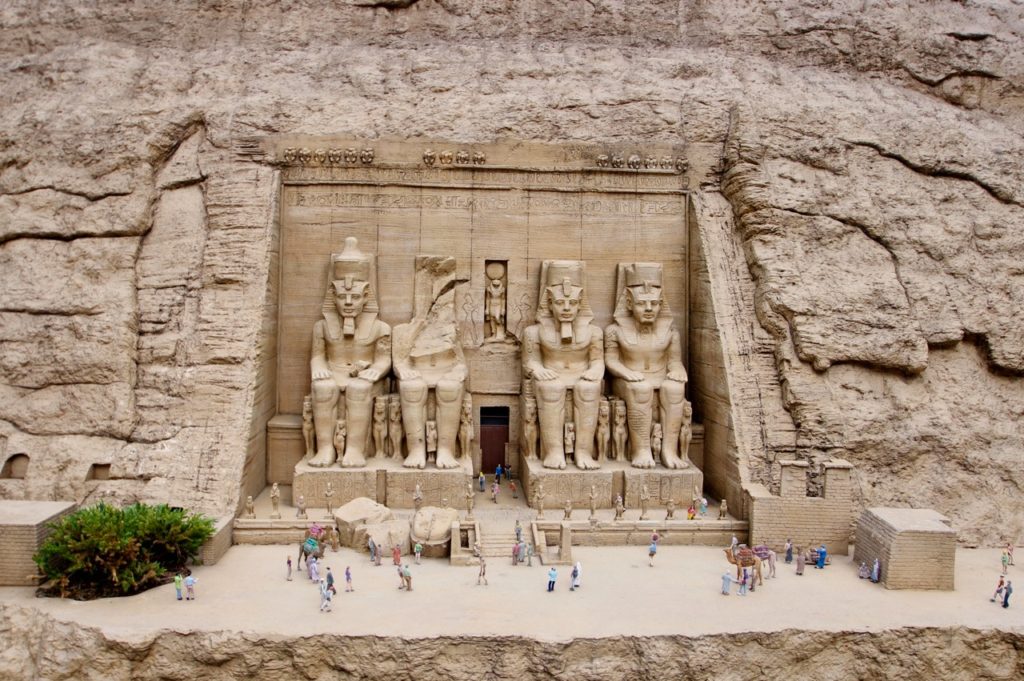
These statues from the Abu Simbel temple in Egypt were relocated to preserve them from the Aswan High Dam.
The Asia Zone features Cambodia’s Angkor Wat temple complex, India’s Taj Mahal, Forbidden City in Beijing, the Namdaemun (south gate) of Seoul, Korea, and the Dragon & Tiger Pagodas of Kaohsiung, Taiwan, among others. The Great Wall of China realistically twists and winds along the highest point of park, and features a section in disrepair, complete with a camel grazing at the bottom, evoking memories of the caravans that once passed along the wall en route to the old Silk Road, the trading route that transverses central Asia.
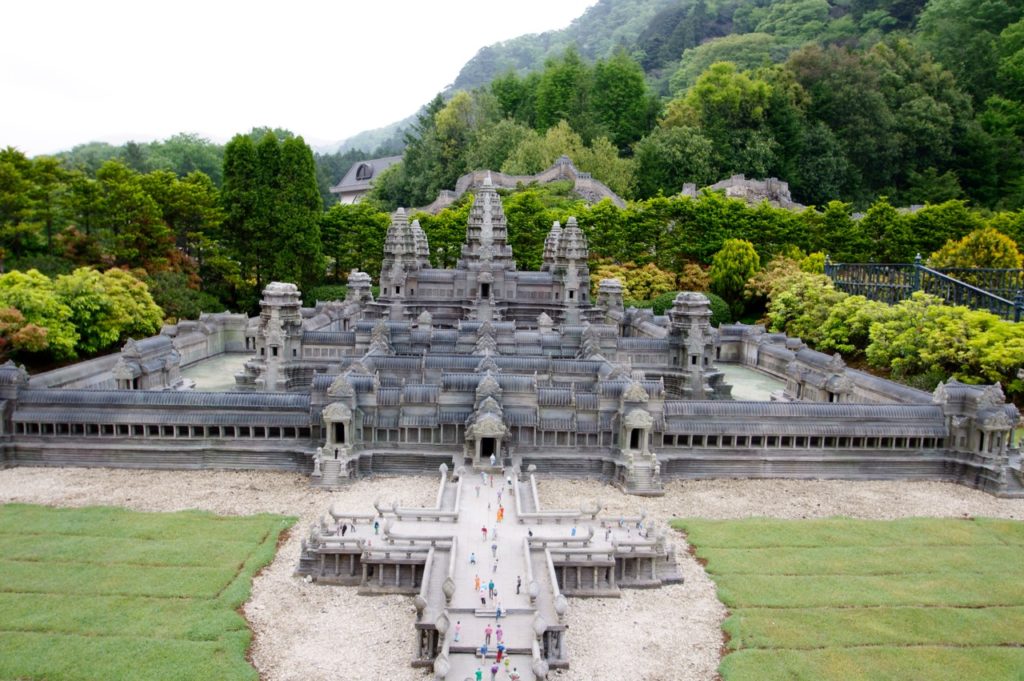
Cambodia’s Ankor Wat temple complex was built in the 12th century.

A white marble mausoleum completed in 1653, the Taj Mahal in Agra, India is considered one of the world’s most beautiful structures.

It’s hard to distinguish this model from the actual Great Wall of China.
The Europe Zone has a large number of models on display, with six from France, five each from England, Italy (including the Vatican), Netherlands and Spain, and others representing Austria, Germany, Greece, Norway and Russia.
They include the Fountain Palace of Czar Peter the Great, the Arc de Triomphe, Versailles palace, Notre Dame Cathedral, Leaning Tower of Pisa, Westminster Abbey, and Bavaria’s elegant Neuschwanstein Castle — which is said to have served as inspiration for the Cinderella castle at Disneyland.
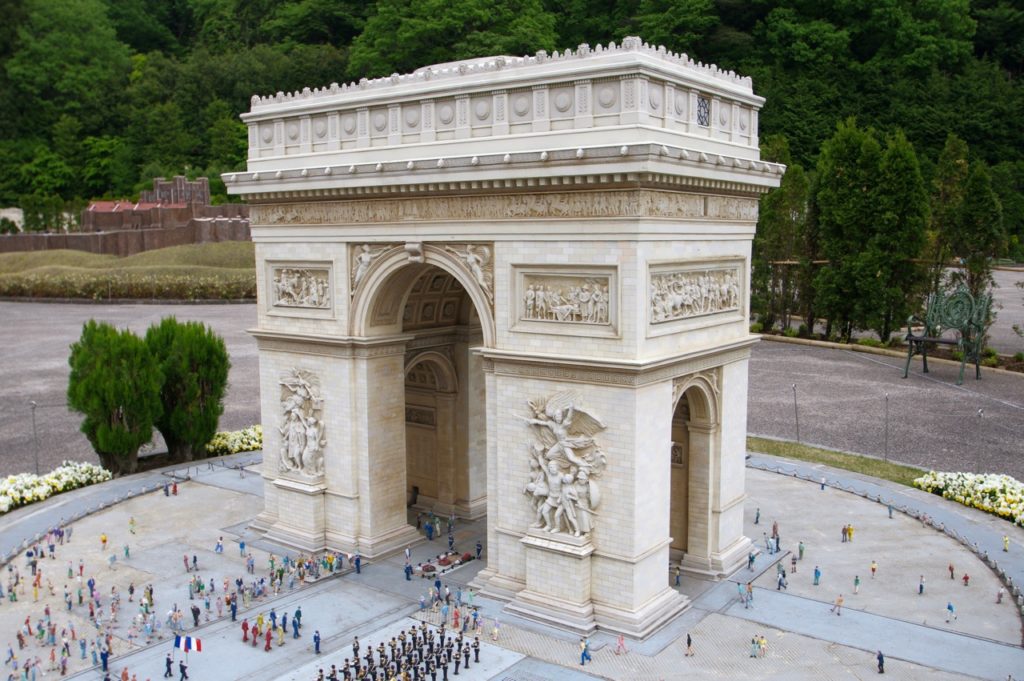
The bas-relief figures on Paris’ Arc de Triomphe de l’Etoile show amazing detail.
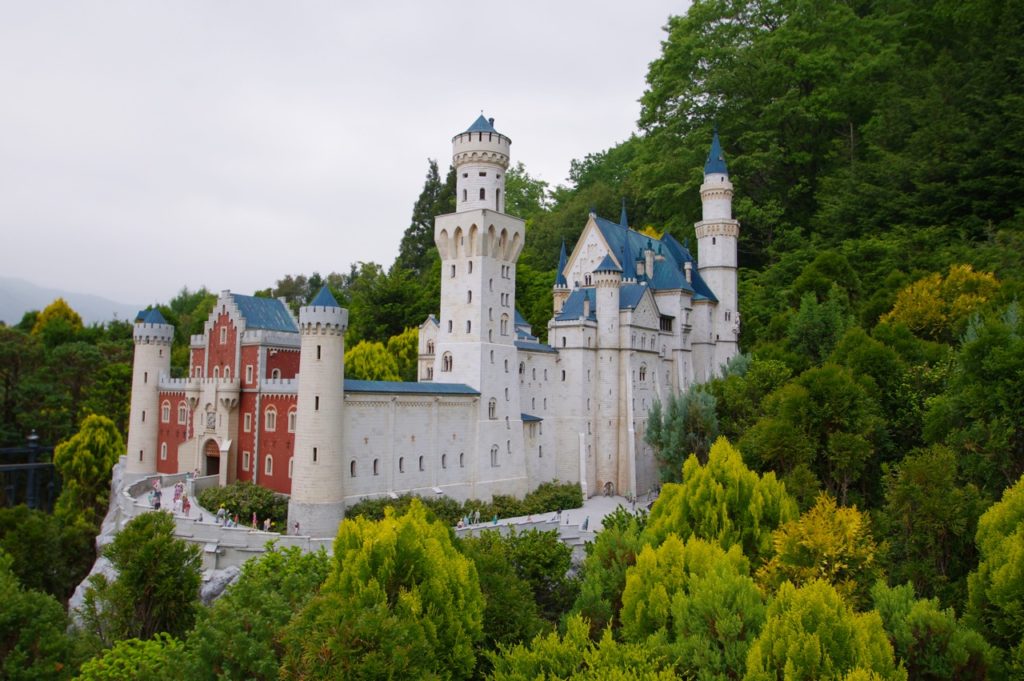
Bavaria’s beautiful Neuschwanstein castle is said to have inspired the Cinderella castle at Disney’s Magic Kingdom.
Japan Zone
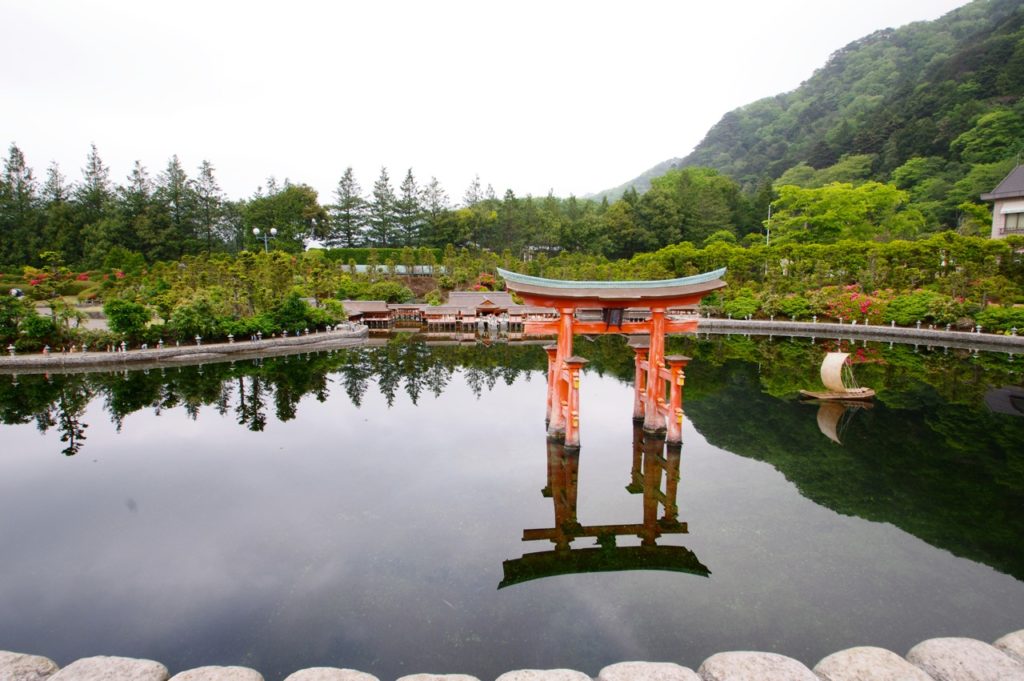
Hiroshima’s Itsukushima Shrine, with its famous red torii gate, is one of Japan’s best known landmarks.
Over 30 famous buildings from around Japan include the Itsukushima shrine in Hiroshima, Nara’s Horyuji temple, the Byodo’in Phoenix Hall in Kyoto, Himeji and Kumamoto Castles, the main building of the Dogo Onsen hot springs in Matsuyama, Ehime Prefecture and the Shureimon Gate of Okinawa.
To do the park justice, I recommend at least two hours be allocated for a visit. Each of the 102 buildings and monuments is a work of art in miniature, with the colors, texture and detail remarkably realistic, and one needs to make an extra effort to take in other touches, such as its beautiful landscaping, like the 20,000 real bonsai trees whose foliage changes with the seasons. And the 140,000 human miniatures who populate the various sites are all claimed to have individual faces.
Needless to say, there are no restrictions on photographs so you can pose for a photo standing beside a life-size British palace guard in bearskin cap, or terra cotta warrior from the tomb of Emperor Qin Shi Huang. Or, you can mount a kneeling camel in front of the Great Pyramid of Cheops.
In addition to several gift shops located on the premises, the park operates two large restaurants, both with seating for over 200 persons.
While in Tochigi, travelers might also want to visit with Edo Wonderland (introduced in Japan Close-Up’s July issue) or some of its other year-round leisure activities, including a “Saru Gundan” troupe of trained monkey performers for 2,100 yen ($21) and raft rides down the Kinugawa River for 2,400 yen ($24).
Admission: 2,500 yen ($25) for adults, 1,200 yen ($12) for children ages 4 and above. Open year-round from 9:00 a.m. to 5:00 p.m. daily (9:30 a.m. to 4:00 p.m. from December 1 through March 19). Last entry is one hour before closing.
Address: 209-1 Ohara, Kinugawaonsen, Nikko City, Tochigi Prefecture 321-2593
English URL: http://www.tobuws.co.jp/default_en.html



0件のコメント